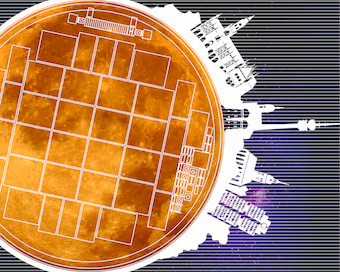Speaker
Description
In recent years, tracking charged particles has seen the rise of a new technology, based on Monolithic Active Pixel Sensors. With respect to silicon micro-strips and hybrid pixels, MAPS allow for low material budget and cheap sensors production using standard CMOS commercial technologies.
Being developed for High Energy Physics, MAPS are currently proposed for uses in Nuclear Physics, Radiation Physics, Dosimetry and Medical Physics. This list still lacks space applications, because of the challenge of making MAPS technologically ready and compliant with space specs. We discuss here the use of MAPS for particle tracking in space, proposing solutions for issues like power consumption, cooling, alignment and readout. For some scientific cases, we describe the advantages of using MAPS in terms of energy threshold, tracking precision ad data compression. Finally, we present the case of ALPIDE, developed at CERN for the ALICE Inner Tracking System Upgrade and recently proposed for the High Energy Particle Detector of the Second China Seismic Electromagnetic Satellite.
